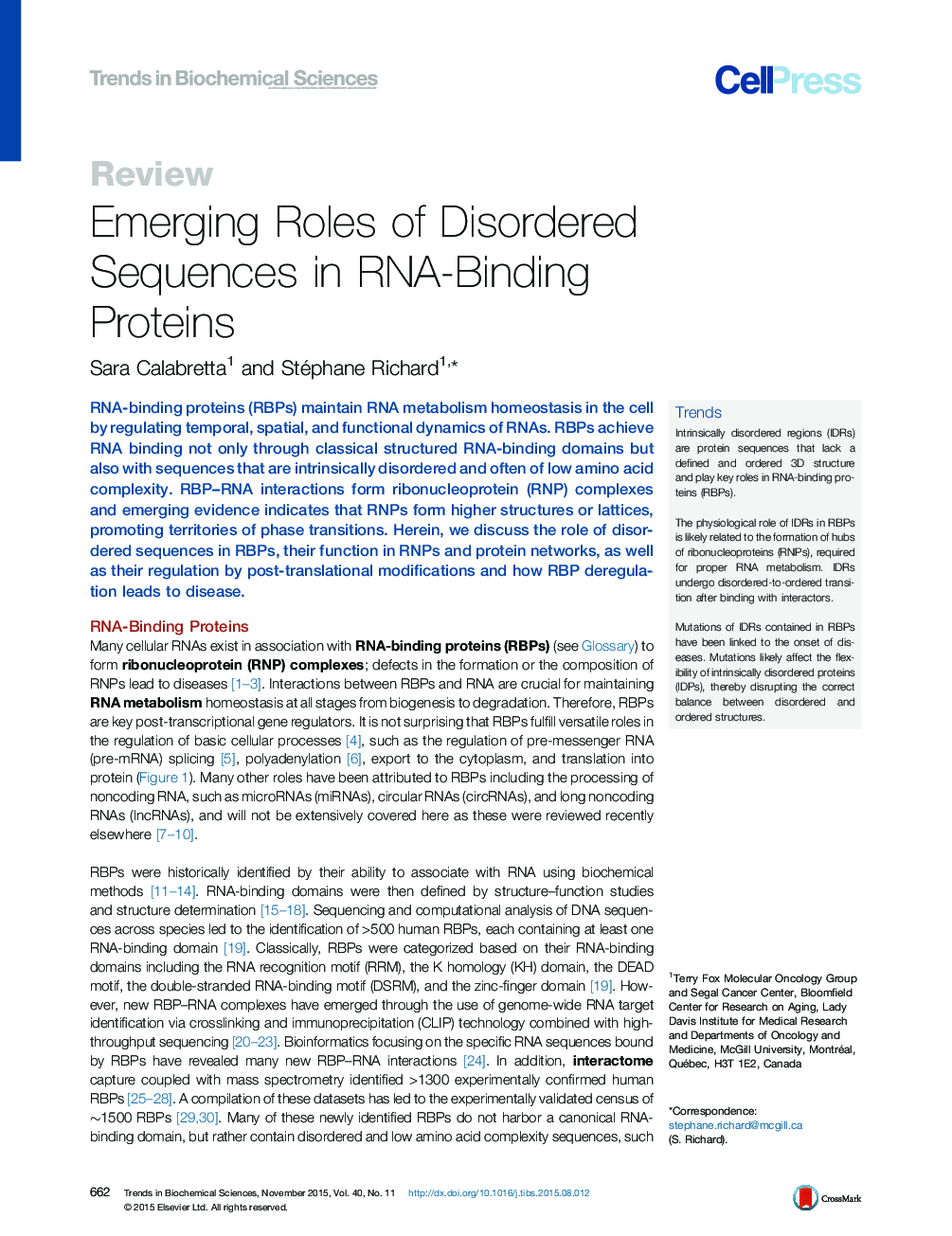| Article ID | Journal | Published Year | Pages | File Type |
|---|---|---|---|---|
| 2030528 | Trends in Biochemical Sciences | 2015 | 11 Pages |
RNA-binding proteins (RBPs) maintain RNA metabolism homeostasis in the cell by regulating temporal, spatial, and functional dynamics of RNAs. RBPs achieve RNA binding not only through classical structured RNA-binding domains but also with sequences that are intrinsically disordered and often of low amino acid complexity. RBP–RNA interactions form ribonucleoprotein (RNP) complexes and emerging evidence indicates that RNPs form higher structures or lattices, promoting territories of phase transitions. Herein, we discuss the role of disordered sequences in RBPs, their function in RNPs and protein networks, as well as their regulation by post-translational modifications and how RBP deregulation leads to disease.
TrendsIntrinsically disordered regions (IDRs) are protein sequences that lack a defined and ordered 3D structure and play key roles in RNA-binding proteins (RBPs).The physiological role of IDRs in RBPs is likely related to the formation of hubs of ribonucleoproteins (RNPs), required for proper RNA metabolism. IDRs undergo disordered-to-ordered transition after binding with interactors.Mutations of IDRs contained in RBPs have been linked to the onset of diseases. Mutations likely affect the flexibility of intrinsically disordered proteins (IDPs), thereby disrupting the correct balance between disordered and ordered structures.
